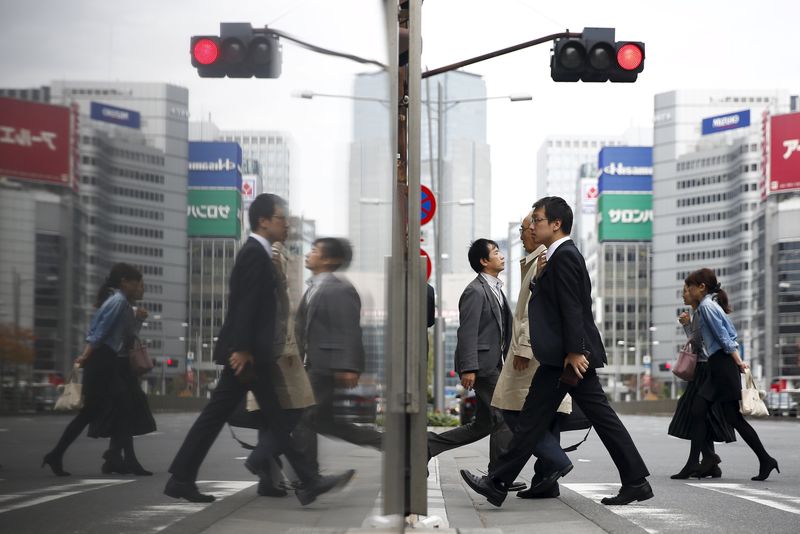
© Reuters.
Investing.com– The Japanese economy unexpectedly shrank in the fourth quarter of 2023, entering a technical recession as sticky inflation and a weak yen weighed on private spending, which largely offset improved export demand.
The reading now complicates the Bank of Japan’s plans to begin tightening policy this year, given that worsening growth necessitates stimulus and looser monetary conditions.
fell 0.1% quarter-on-quarter in the three months to December 31, government data showed on Thursday. The reading was weaker than expectations for a rise of 0.2%, but improved from the 0.8% decline seen in the prior quarter.
Year-on-year, fell 0.2% in the December quarter. Two straight quarters of GDP contraction put the Japanese economy in a technical recession.
Third quarter GDP figures were also revised a hair lower on Thursday.
The weaker Q4 reading was driven chiefly by a sustained drop in , which fell 0.2% q-o-q, missing estimates for growth of 0.1%. The prior quarter’s figure was also revised lower to a drop of 0.3%.
– which represents the net contribution to the GDP from exports, grew 0.2%, weaker than expectations of 0.3% and a mild recovery from the 0.1% contraction seen in the prior quarter.
The sluggish growth comes amid persistent weakness in top export destination China, which is also struggling with weak economic growth.
Japan’s technical recession presents a challenge to the BOJ’s plans to begin phasing out its ultra-dovish policy this year. Worsening growth is likely to limit the extent to which the BOJ will be able to raise interest rates and tighten monetary conditions.
While inflation has fallen closer to the BOJ’s 2% annual target range, it has still remained above that level amid persistent price shocks from high import prices and a weak yen. Wage growth has also remained largely stagnant.
The two factors weighed heavily on domestic spending, which is a key driver of the Japanese economy. A decline in spending now appeared to have offset a middling boost from export demand.
Business spending also remained weak, with down 0.1% q-o-q in the quarter, against expectations for a rise of 0.3%. But the figure improved marginally from a 0.6% drop seen in the prior quarter.
Inflation slowed more than expected in the quarter, with the falling to 3.8% year-on-year, lower than expectations of 4% and the prior quarter’s reading of 5.3%.




